A short-lived revolutionary issue in Uruapan
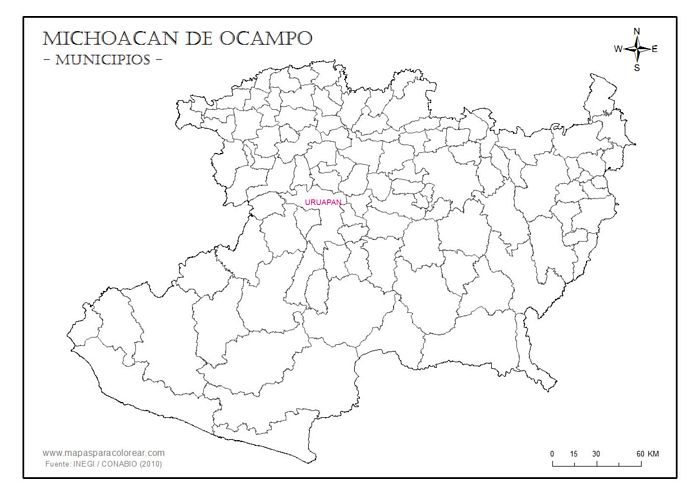
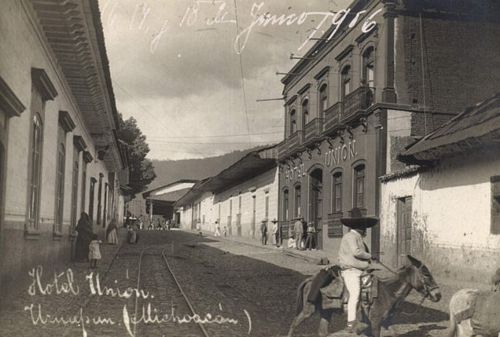
Uruapan in 1916
Francisco Murguía, a photographer from Monclova, Coahuila had fought for Madero and on Huerta’s coup d’état was one of the first to support Carranza’s Plan de Guadalupe. He campaigned with General Pablo González in the northeast and from August to November 1914 served as governor and military commander in the state of México. He supported Carranza at the Convention and with a column of 10,000 men marched to Michoacán to join Manuel M. Diéguez in the fight against Villismo in the east of Mexico. On 18 January 1915 they recovered Guadalajara from Calixto Contreras and Julián Medina.
During this campaign Murguía found it necessary to issue paper money to pay his troops, probably due to the desire to outlaw the enemy’s currency in newly captured territory, pursuant to Carranza’s decree of 27 November disowning the Chihuahua and Convention issues, and the lack of suitable replacements.
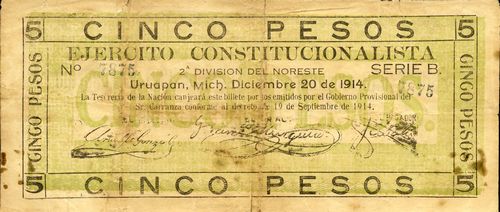
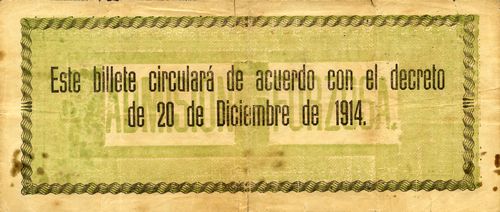
| Series | from | to | total number |
total value |
||
| $5 | B | includes numbers 2711CNBanxico #5253 to 25510CNBanxico #5255 |
These relatively primitive notes carry the title of the 2a División del Noreste of the Ejército Constitucionalista and were authorized by a decree issued in Uruapan, Michoacán on 20 December 1914. The only known denomination is five pesos but as this is Series B, there was probably at least one other value. Besides Francisco Murguía the notes carried the signatures of Arnulfo González, as his Chief of Staff (O[ficial]. D[e]. E[stado]. M[ayor].), and J. A. Solís as Paymaster (Pagador).
|
He then returned to Coahuila, where on 5 May 1913, Carranza appointed him a Mayor. He fought under Pablo González and on 2 November was made a General Brigadier. He campaigned in Coahuila, Nuevo León and Tamaulipas, and on 14 July 1914 left Saltillo en route for Mexico City, occupying Querétaro on 27 July and Toluca on 6 August. Carranza named him governor of the Estado de México, a post he held from 27 August to 24 November. As a progressive governor he enacted various laws, including, on 1 September, a decree improving working conditions, setting a minimum wage of 75c and prohibiting the tienda de raya and payment in vales. He supported Carranza at the Aguascalientes Convention but when the Conventionists took Mexico City he had to abandon Toluca and moved to Michoacán, where he occupied Morelia and persuaded Gertrudis G. Sánchez to side with Carranza. On 6 January 1915 his forces joined with those of Manuel M. Diéguez at Tuxpan, Jalisco, to recover Guadalajara, which they achieved on 19 January. A few days later they were forced to retreat towards Colima but took Guadalajara again on 27 January. Murguía participated in the campaign in the Bajío and took command of the Constitutionalist forces when Obregón lost his arm. From his headquarters in Lagos de Moreno, Jalisco, he captured a variety of towns from the Villistas - Encarnación de Díaz, Aguascalientes, Zacatecas, Viesca and finally Torreón. In 1916 Carranza named him Jefe de Operaciones Militares of Durango and, in 1917, of Chihuahua, but he was removed after he fell out with the governor of Chihuahua. When Obregón revolted, Murguía took command in the Valle de México and accompanied Carranza on his flight to Veracruz. When Carranza was assassinated at Tlaxcalantongo Murguía accompanied the body back to Mexico City, but was arrested at San Cristóbal Ecatepec, Estado de México, on suspicion of the murder. He was released under caution in December and on 2 January 1921 left the capital and after a random journey, pursued by the police, he entered the United States, swimming across the Rio Grande. He settled in San Antonio, Texas, where he put himself in charge of others dissatisfied with the government of Alvaro Obregón. and then launched the Plan de Zaragoza. Pursued by the Obregonista authorities, he suffered several defeats before arriving, on 20 October 1922, at Tepehuanes, Durango. On the night of 31 October he was apprehended and subjected to a summary court. He was sentenced to death and died by firing squad in Tepehuanes on 1 November. |
 |
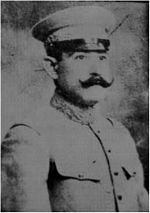
Arnulfo González Medina was born in Villa de Juárez, Coahuila, on 23 April 1886 . As a child he went to live in Sabinas, where he attended elementary school, and after studying in Saltillo, moved back to Sabinas to work as a teacher. He was a follower of Francisco I. Madero and chaired an anti-reelection club. In February 1913 he joined the forces of General Jesús Carranza to fight Victoriano Huerta . Under the command of Pablo González he participated in various combats and reached the rank of captain and then colonel. General Murguía then appointed him his chief of General Staff. Hhe was appointed Secretary General of the Estado de México and in December he served as the state’s interim governor. In September 1915, Carranza sent Murguía to cooperate with Domingo Arrieta and his brothers. Problems soon arose and Murguia deposed Arrieta from his positions as governor and military commander of Durango and, on 28 February 1916, gave the positions to González. González held these until July 1916, and also held these same posts in Chihuahua from 5 December 1916 to 1918. He was governor of the Federal District from 28 August 1918 to 21 January 1919. He took over the governorship of Coahuila on 1 December 1921. During his administration there were several outbreaks of rebellion in the state, including Francisco Murguía who took up arms in Zaragoza, and after other crises, he was dismissed on 31 October 1923. After leaving the government he resided in Mexico City and held various administrative positions. He was promoted to brigadier general in 1937 and then to divisional general. He died in Mexico City in 1962. |
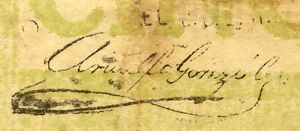 |
| J. A. Solís | 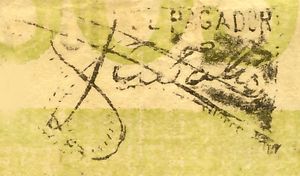 |
and the comment that the Tesorería General de la Nación would exchange them for notes of Carranza’s Gobierno Provisional de México issue.
In a report to Carranza dated 8 January 1915 Murguía stated that his decree authorized a total of a million pesos but in the event he had only issued $120,000 up to that date. On 12 January an urgent report from the temporary state capital of Ciudad Guzmán to Manuel M. Diéguez, the Governor of Jalisco and Jefe de la División de Occidente, at Sayula, stated that Murguía’s troops had about $30,000 in this paper money and it was still accepted by tradespeople, though easy to counterfeit. It suggested changing them for Carrancista issues that Murguía could reimburse them for when he received funds. This would stop their circulation and prevent an enemy general such as the Villista governor of Michoacán, Gertrudis G. Sánchez, attempting economic sabotage by sending to Carrancista areas more money than Murguía actually issued, something that had happened with Villista issuesAJ, Hacienda 1-915, caja 115, serie 3096 (antes 28443).
Withdrawal
On 8 December 1914, just before Murguía’s issue, Carranza had decreed that, as issues were being made without his authorization, it was convenient to unify the currency and determine precisely what obligations the government had undertaken. Therefore, from 1 April 1915 certain issues would cease to be legal tender and would in time be exchanged by the Tesorería de la Federación. However, in a circular (núm.10) of 25 February 1915 Carranza’s Secretaría de Hacienda acknowledged that certain military commanders had been forced to issue paper money and that these would be tolerated in the local area until such time as the Secretaría could arrange for their retirement. These included the Murguía notes, where the Secretaría had already made arrangement for their withdrawal. The Tesorería General de la Nación would exchange any that were presented.
Once he had defeated most of his enemies, Carranza could be more specific. On 28 April 1916, as part of the move to introduce a unified currency, he listed various issues that would be accepted until 30 June on deposit by the Tesorería General de la Nación, Jefaturas de Hacienda and Administraciones Principales del Timbre. The list included the Uruapan issue. After that date they would be null and void. On 24 July 1916 Carranza decreed that from 1 August they would exchange the notes listed in the decree of 28 April that had been deposited in the offices of Hacienda with infalsificables at a rate of ten to one.
Finally, on 4 September 1917 Carranza expressly forbade speculation in these Uruapan notes, amongst others, but this does not mean that any were actually still being traded. Most were probably redeemed, as suggested in January 1915, soon after their issue.

